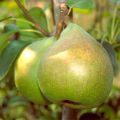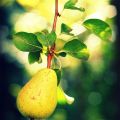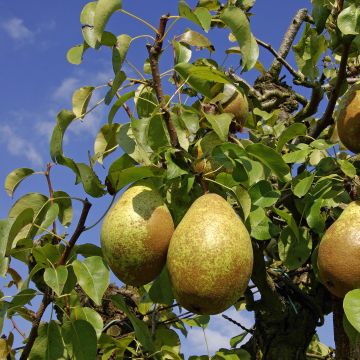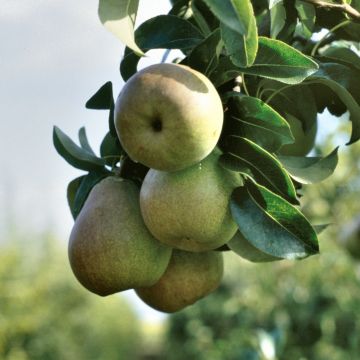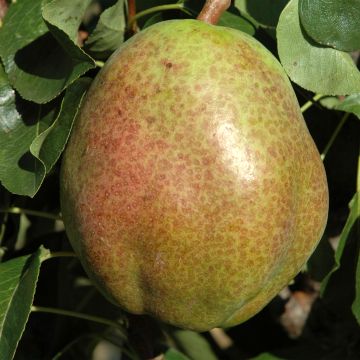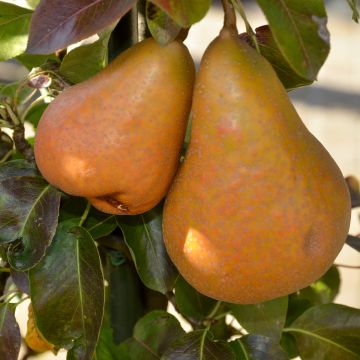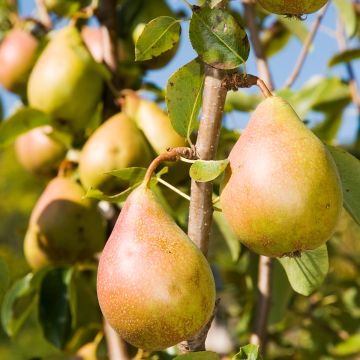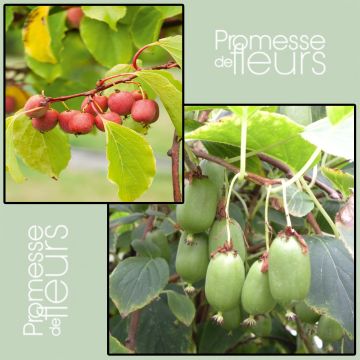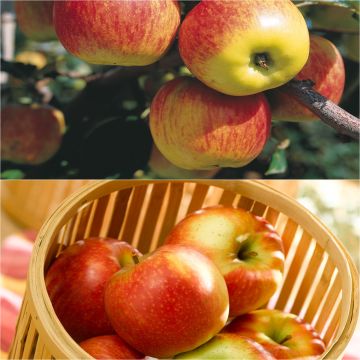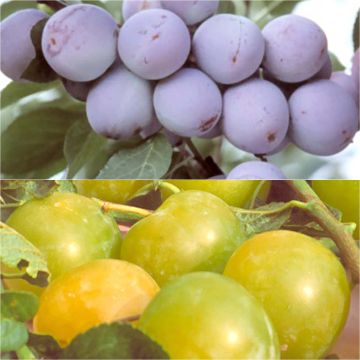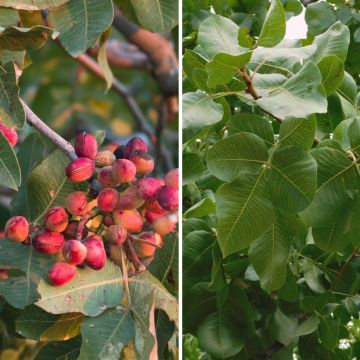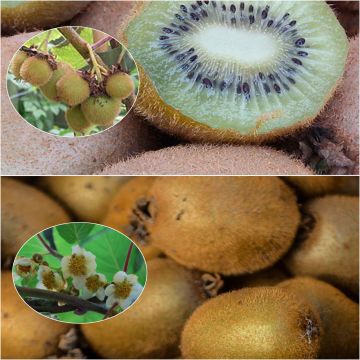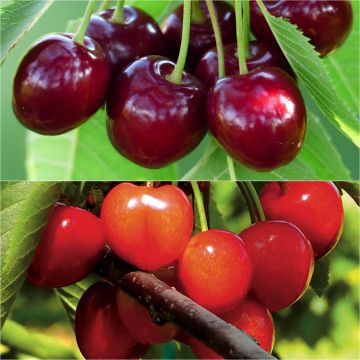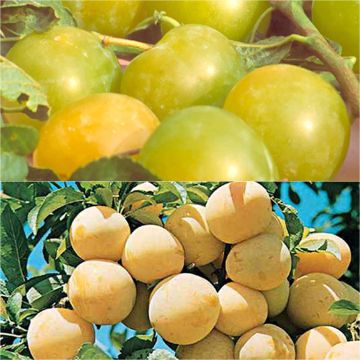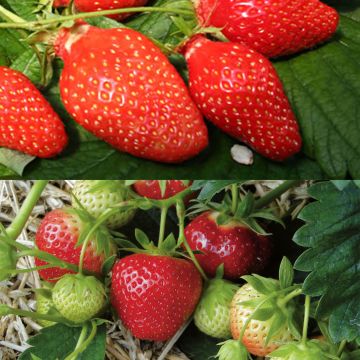País e idioma de entrega
Tu lugar de residencia parece ser:
Your country of residence is:
Para disfrutar de la mejor experiencia en nuestro sitio, puedes cambiar:
País de entrega:
Alemania
Andorra
Austria
Bulgaria
Bélgica
Canadá
Chequia
Chile
Chipre
Croacia
Dinamarca
Eslovaquia
Eslovenia
España
Estonia
Finlandia
Francia
Grecia
Hungría
Irlanda
Islandia
Italia
Letonia
Lituania
Luxemburgo
Malta
Mónaco
Países Bajos
Polonia
Portugal
Reino Unido
Rumanía
Suecia
Suiza
We only deliver seed and bulb products to your country. If you add other products to your basket, they cannot be shipped.
Idioma:
Francés
Alemán
Español
Inglés
My Account
Hola
Mis listas de favoritos
Plantfit
Mi cesta
Inicio de sesión / Registro
¿Ya eres cliente?
¿Todavía no eres cliente?
Crea su cuenta para poder realizar el seguimiento de tu pedido, acceder a nuestro servicio de atención al cliente y, si lo deseas, beneficiar de nuestras próximas ofertas.
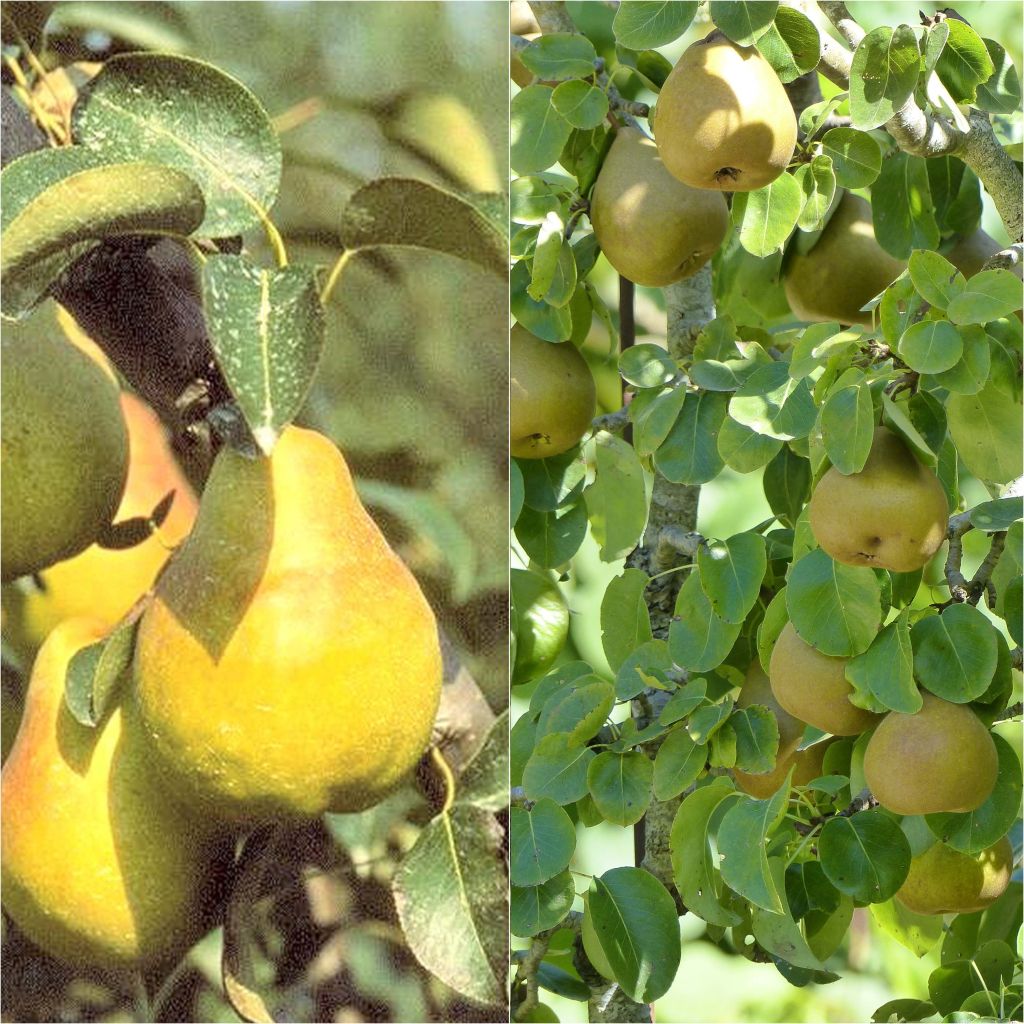

Organic Pear Tree Pollinator Duo for a Spread Out Harvest
Organic Pear Tree Pollinator Duo for a Spread Out Harvest
Pyrus communis William's, Doyenné du Comice
Más de para que tu pedido salga hoy mismo.
Enviado por correo a partir del
Gastos de transporte a partir de 5,90 €. Artículos grandes, gastos de envío a partir de 6,90 €.
Más información
Este artículo no está disponible para tu país.
País de entrega:
Alemania
Andorra
Austria
Bulgaria
Bélgica
Canadá
Chequia
Chile
Chipre
Croacia
Dinamarca
Eslovaquia
Eslovenia
España
Estonia
Finlandia
Francia
Grecia
Hungría
Irlanda
Islandia
Italia
Letonia
Lituania
Luxemburgo
Malta
Mónaco
Países Bajos
Polonia
Portugal
Reino Unido
Rumanía
Suecia
Suiza
Programa tu fecha de entrega,
y elige tu fecha en la cesta
6 meses de garantía en el desarrollo de esta planta
Más información
Garantizamos la calidad de nuestras plantas durante un ciclo vegetativo completo, y sustituiremos a nuestro cargo cualquier planta que no se recupere en condiciones climáticas y de plantación normales.
Desde 5,90 € para entrega en un punto de recogida y 6,90 € para entrega a domicilio
Entrega a domicilio exprés en 24-48 horas: 8,90 €.
Composición de esta colección (2 plantas)
Descripción
The Organic Pear Pollinator Duo allows for an abundant pear harvest, spanning from mid-August to October. The William's Pear, self-fertile, is an excellent pollinator for all other pear trees and specifically for the Comice Pear which will in turn pollinate it. Both are excellent fruit trees for family gardens and organic management, as they require minimal treatments and maintenance under good growing conditions. Here they are offered as bare-root plants in whip form (a thick unbranched stem) from Organic Agriculture, to be planted upon receipt, preferably in autumn. They can be trained as bush, espalier, or any other desired form.
This Duo consists of:
-x1 William's Pear: a highly adaptable variety with easy cultivation, renowned for the excellent taste quality of its large pears and their storage ability. Its fruits, yellow when ripe, sometimes speckled with russet, offer a fine, juicy, melting, sweet, and fragrant flesh, remarkably aromatic. Fairly large, with a diameter of about 7 cm, round and stout, they can be picked as early as August and keep well until November either in a ventilated cellar or in the refrigerator.
- x1 Comice Pear: a vigorous variety, slow to fruit, with average and sometimes irregular production, subject to alternation. Pollination by the William's Pear enhances the yield. The tree produces large pears of excellent taste quality. Its fruits, golden yellow tinged with red in sunlight and speckled brown when ripe, reveal a pale, sweet, fragrant, melting, and juicy flesh. Harvest takes place in September and October. The fruits keep well in cool conditions until December, but their thin skin makes them sensitive to handling. Self-sterile, this pear tree is a good pollinator for other varieties.
Individually labelled.
While not frost-hardy, the Pear tree will still appreciate sheltered and sunny locations; avoid frosty and windy spots. It likes fresh and deep soils, but dislikes overly sandy and calcareous soils. In winter, provide it with a handful of wood ash rich in potash to improve flowering and fruit quality.
Its upright growth imparts a tall and slender, very harmonious silhouette. Its oval leaves, finely toothed at the edges, have a petiole as long as the blade and measure about 8 to 9 cm. They turn yellow before falling in autumn.
Its late white blossom in April shields it from frosts. Its flowers consist of 5 white petals and are highly visited by bees.
Designed for organic management, Pear tree cultivation will thrive under certain conditions. To prevent diseases and pests, you should:
- choose a deep, light, rich, and well-draining soil, well prepared;
- avoid planting in a location previously hosting other woody plants,
- prune to promote tree aeration,
- thin out to prevent fruit diseases,
- apply compost in autumn, in limited quantity based on your soil's richness, and incorporate it into the soil,
- set up multi-species hedges (except prunus), stone and wood piles, and nest boxes (for birds, voles, and bats) to attract beneficial insects.
In case of diseases, removing and burning affected parts will be necessary. The William's Pear is susceptible to scab but not very to Fire Blight, and fairly resistant to Pear Rust and Pseudomonas syringae. In case of scab attacks, consider spraying Bordeaux mixture at half-strength.
Pears are enjoyed fresh, in syrup, in pastries, as jams and compotes, and for making spirits, ...
For transport reasons, our tallest whips may be pruned before shipping. They are suitable for all common training forms: cordons, espaliers, bushes, half-standards, and low standards, except for high standards. If you would like more information or advice on training your fruit trees, feel free to contact us.
Porte
Fruta
Floración
Follaje
Botánica
Pyrus
communis
William's, Doyenné du Comice
Rosaceae
Hortícola
Otras Peral
Plantación y cuidados
Plant the pear tree in a sunny location, in acidic or neutral soil, even very slightly calcareous, fresh but not excessively so. Ensure drainage of the planting pit with a thin layer of gravel. Dig a hole two to three weeks before planting, twice as wide and deep as the pot. On planting day, place the tree with its pot in a basin of water, to moisten the entire root ball by capillarity. Place compost at the bottom of the hole. Position the tree in the hole, fill with soil mixed with compost. Do not bury the graft union. Firmly tamp down at the base. The root ball should be completely covered. Water generously.
You can add, during winter, a small handful of wood ash, rich in potash, this will improve fruiting.
¿Cuándo plantar?
¿En qué lugar?
Cuidado
Este artículo todavía no ha recibido comentarios; sé el primero en compartir tu experiencia.
Colecciones de árboles frutales y frutos pequeños
¿No has encontrado lo que buscas?
La rusticidad es la temperatura invernal más baja que una planta puede soportar sin sufrir daños graves o incluso la muerte. Sin embargo, la rusticidad se ve afectada por la ubicación (zona protegida, como un patio), la protección (cubierta de invierno) y el tipo de suelo (la rusticidad mejora con un suelo bien drenado).

Condiciones generales de uso del servicio de fotos del cliente
Con el fin de favorecer la interacción y el intercambio de experiencias entre jardineros, Promesse de fleurs ofrece varios servicios que permiten cargar contenidos en su Sitio web, en particular a través del módulo "Compartir fotos".
El usuario se compromete a no:
- Publicar contenidos ilegales, perjudiciales, insultantes, racistas, que inciten al odio, revisionistas, contrarios a las buenas costumbres, que atenten contra la vida privada o vulneren los derechos privados de terceros, en particular el derecho a la imagen de las personas y de los bienes, los derechos de propiedad intelectual o el derecho a la vida privada
- Publicar contenidos en nombre de un tercero
-
Asumir la identidad de un tercero y/o publicar cualquier información personal sobre un tercero
En general, los Usuarios se comprometen a abstenerse de cualquier comportamiento poco ético.
Todos los Contenidos, en particular, textos, comentarios, archivos, imágenes, fotos, vídeos, obras, etc., que pueden ser objeto de derechos de propiedad, derechos de propiedad intelectual, derechos de imagen u otros derechos privados, siguen siendo propiedad del Usuario, a reserva de los derechos limitados concedidos por la licencia definida a continuación a Promesse de fleurs. El Usuario es libre de publicar o no dicho Contenido en el Sitio web, especialmente a través del servicio "Compartir fotos", y acepta que este Contenido se haga público y libremente accesible, especialmente en Internet.
Reconocen, se comprometen y garantizan que disponen de todos los derechos y autorizaciones necesarios para dicha publicación en el Sitio, en particular en lo que respecta a la legislación vigente y a los derechos de privacidad, propiedad, propiedad intelectual, imagen, contratos o de cualquier otra naturaleza. Al publicar dicho Contenido en el Sitio, el Usuario es consciente de que compromete su responsabilidad como editor del Contenido en el sentido de la ley, y concede a Promesse de fleurs una licencia no exclusiva, gratuita y mundial para dicho Contenido, durante toda la duración de su publicación, incluidos los derechos de reproducción, representación, carga, visualización, ejecución, transmisión y almacenamiento.
Los usuarios también autorizan a que su nombre se asocie al Contenido y aceptan que esta asociación no siempre pueda realizarse.
Mediante su publicación, los usuarios autorizan que los Contenidos sean automáticamente accesibles en Internet, en particular en otros sitios y/o blogs y/o páginas web del sitio Promesse de fleurs, incluidas en particular las páginas de las redes sociales y el catálogo de Promesse de fleurs.
Los usuarios pueden obtener libremente la devolución de los contenidos confiados poniéndose en contacto con el servicio de atención al cliente a través del formulario de contacto.
Los periodos de siembra indicados en nuestro sitio web se aplican a los países y regiones de la zona 8 del USDA (Francia, Reino Unido, Irlanda, Países Bajos).
En zonas más frías (Escandinavia, Polonia, Austria...), retrase 3-4 semanas cualquier siembra al aire libre, o siembre en invernadero.
En climas más cálidos (Italia, España, Grecia, etc.), adelante unas semanas la siembra al aire libre.
El periodo de recolección indicado en nuestro sitio web se aplica a los países y regiones de la zona USDA 8 (Francia, Inglaterra, Irlanda, Países Bajos).
En las zonas más frías (Escandinavia, Polonia, Austria...) es probable que la cosecha de frutas y hortalizas se retrase 3-4 semanas.
En las zonas más cálidas (Italia, España, Grecia...), es probable que la cosecha se adelante, dependiendo de las condiciones meteorológicas.
El periodo de plantación indicado en nuestro sitio web se aplica a los países y regiones situados en la zona USDA 8 (Francia, Reino Unido, Irlanda, Países Bajos).
Variará en función de su lugar de residencia:
- En las zonas mediterráneas (Marsella, Madrid, Milán, etc.), el otoño y el invierno son los mejores periodos de plantación.
- En las zonas continentales (Estrasburgo, Múnich, Viena, etc.), retrase la plantación de 2 a 3 semanas en primavera y adelántela de 2 a 4 semanas en otoño.
- En las regiones montañosas (Alpes, Pirineos, Cárpatos, etc.), es mejor plantar a finales de primavera (mayo-junio) o a finales de verano (agosto-septiembre).
En climas templados, la poda de los arbustos de floración primaveral: forsitia, spireas, etc. debe realizarse justo después de la floración.
La poda de los arbustos de floración estival: árbol de Júpiter, perovskia, etc. puede realizarse en invierno o en primavera.
En las regiones frías y con plantas sensibles a las heladas, evite podar demasiado pronto, cuando aún pueden producirse heladas severas.
El periodo de floración indicado en nuestra página web se aplica a los países y regiones situados en la zona USDA 8 (Francia, Reino Unido, Irlanda, Países Bajos, etc.).
Variará en función de su lugar de residencia:
- En las zonas 9 a 10 (Italia, España, Grecia, etc.), la floración se producirá entre 2 y 4 semanas antes.
- En las zonas 6 a 7 (Alemania, Polonia, Eslovenia y regiones montañosas bajas), la floración se retrasará de 2 a 3 semanas.
- En la zona 5 (Europa Central, Escandinavia), la floración se retrasará de 3 a 5 semanas.
